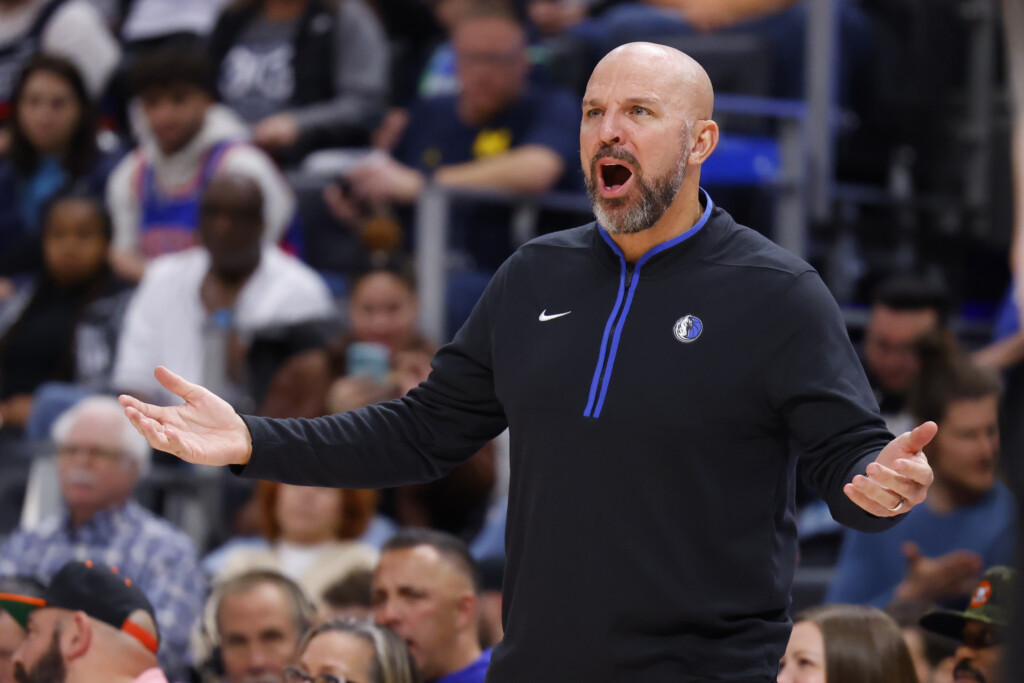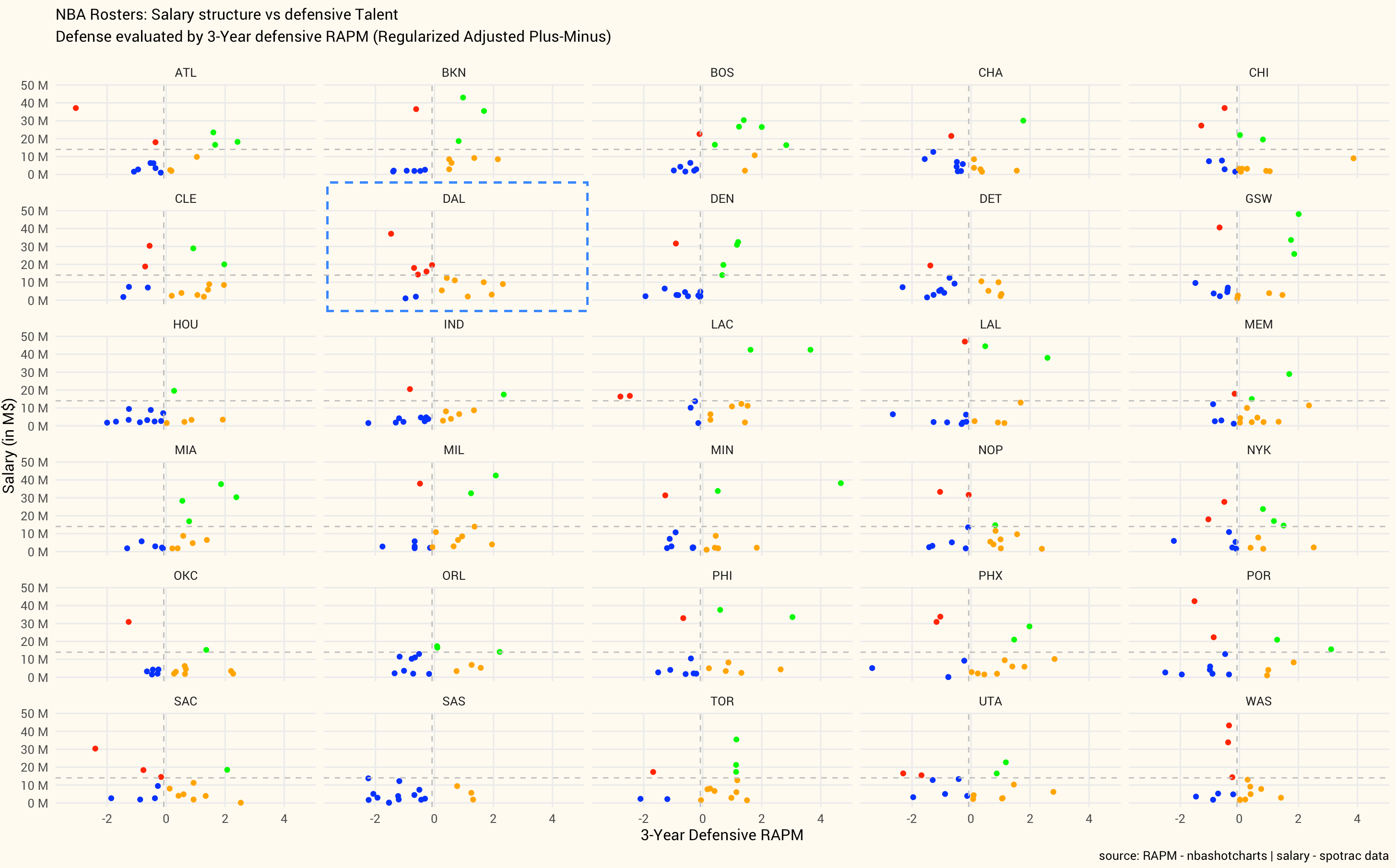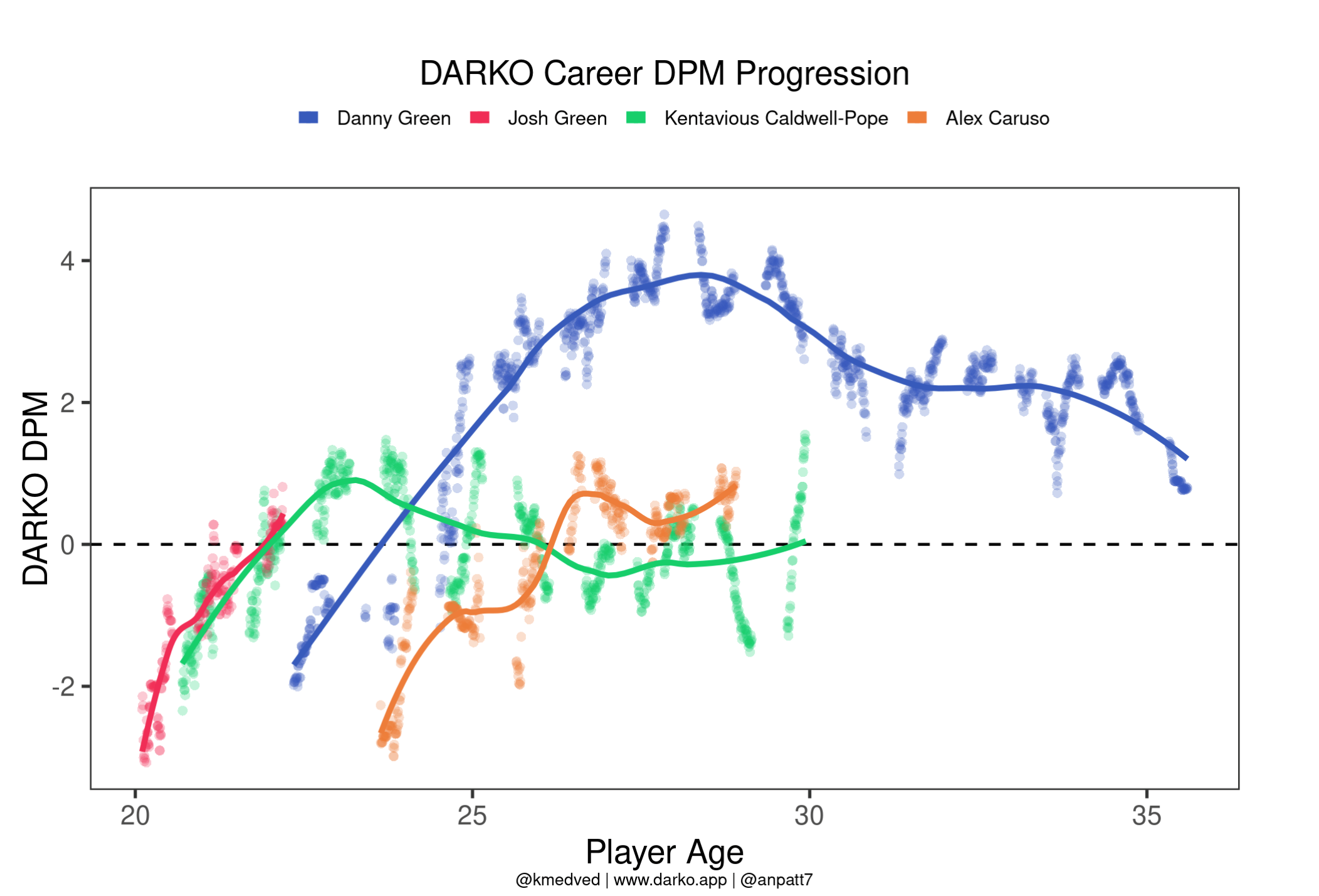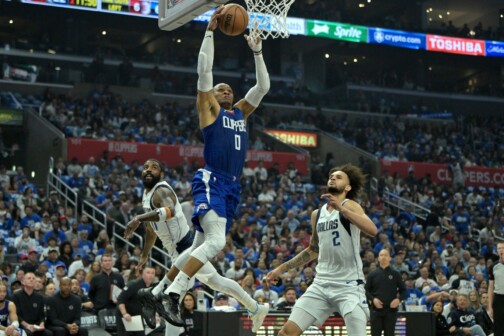For the Mavericks the Feb. 9 trade deadline and the All-Star break can’t come soon enough. Dallas has lost seven of its last 10 games to drop to eighth place in a crowded Western Conference playoff race, in which the teams in the third and 13th spots are separated by only five games. All the while, the Mavericks are bleeding after injuries to key players. More than 50 games into the season, this much is clear: they need reinforcements badly.
Not that this is a secret; one fan painted a “cry for help” mural (Brian Dameris will have more on that and the internal fallout from it this week). How hard Luka Doncic is pushing for upgrades is unclear, but the body language of the Mavericks’ floor general isn’t. Dallas looks like a worse team than it was last season. The defense has fallen off a cliff—to 22nd in the NBA—and while the numbers still portray a top-10 offense, that requires Doncic playing at an MVP level. Things fall apart when he is off the court.
But how much reshuffling can we expect at the trade deadline? Staying the course, which means making no panic moves before the summer, when the Mavericks will have full flexibility to trade their future draft capital, still seems like the most rational plan. Chances are low that Mark Cuban and Nico Harrison pull the trigger on a splash move that would address the team’s biggest void, a second star to pair with Doncic, who just earned his fourth consecutive All-Star selection and a franchise-record third time being voted a starter. But watching Doncic take a significant leap while his team is taking a step back suggests a move at the deadline is inevitable.
Whatever move is made, even if it is just improvement on the margins, I would like to see the front office address one of three areas.
Change the roster imbalance at the top of the salary ladder
This is the biggest issue, and it has been problematic for a while. Throughout Doncic’s tenure, the highest-paid players on the roster have been below-average defensive players, with a healthy Kristaps Porzingis being the rare exception (and Porzingis being fully healthy was rarer still). If you look at the Mavericks’ salary cap sheet, none of the five highest-paid players— Doncic, Spencer Dinwiddie, Tim Hardaway Jr., Davis Bertans, and Christian Wood—is a stalwart defender. I tried to think of a playoff contender with such a roster structure; I struggled to come up with one. So I pulled up salary data from Spotrac and matched it with a three-year Defensive RAPM (Regularized Adjusted Plus-Minus) data to find out.
For interpretation of the chart, red dots are players with a high salary and a below-average rank on defense; green dots are high-salary players who can hold their own on defense. Dallas was the only team with five red dots, and among the few with no green ones. And while most of the moves the new front office made—the Hardaway extension, swapping Porzingis for Dinwiddie and Bertans, trading for Wood, and signing JaVale McGee—were not bad in a vacuum (OK, the McGee signing was terrible), they increased the defensive deficiency at the top of the pay grade.
RAPM might not be the optimal way to evaluate defense, but it is a good overall representation of talent distribution. It is certainly not wrong about the Mavericks. If you look at the contending teams, most of them have several green dots. When Jason Kidd took over as coach in 2021, he compared Doncic to a young Picasso, adding that he reminded his young artist to use all the paints. After his team allowed 135 points per game over a three-game stretch in mid-January, Kidd sounded like he was telling the front office to get him more green on the palette. He is not wrong. The Mavericks need to re-establish the defensive mentality that was the foundation of their surprising run to the conference finals last season. The regression on defense is what makes the decision on what to do with Wood and his looming free agency even more difficult than it already was. Whether it’s a push for a star or a minor move for role players, the Mavericks have to start putting green dots on the board.
Make room for Josh Green
Speaking of green, the Mavericks have one such player on their hands, and they need to play him more. Josh Green offers one of the few options for the Mavericks to improve internally, a player with the potential to develop into the sort of two-way wing every team is looking for these days. The third-year Aussie has been frustrating to watch at times, but based on DARKO (which stands for Daily Plus-Minus, or DPM, and is another advanced all-in-one metric), he’s on a similar career trajectory as some other high-level role players who have played significant roles on title-contending teams.
A lot of the Mavs’ regression on defense comes from their struggle to prevent opponents from getting into the paint. Per Second Spectrum tracking data, Dallas is the second-worst team in the NBA in blowby percentage on drives and in frequency of opponents’ drives that end up in a paint touch. It’s last in the league in opponents’ points per chance when the ball handler gets there. Doncic, Dinwiddie, and Hardaway form one of the worst perimeter defenses in the league; none of them provide any kind of on-ball pressure or disruption when defending the pick-and-roll.
Moving Green into the starting lineup is the logical option if the Mavericks want to add more defensive juice. He has been the most competent at defending the drive, has the best overall defensive on/off numbers, and is the rare Maverick who can create offense from defense with his athleticism. He’s also a good fit as a tertiary playmaking option next to Doncic and Spencer Dinwiddie, as he doesn’t need the ball in his hands to create opportunities for others. Green is good at making something happen off turnovers, cuts, and by attacking close-outs. Although he was sidelined for 20 games with an elbow injury, his minutes have been increasing each month, to almost 30 minutes since his return this month (which has helped him average 10.5 points per game during that span). My guess is that the Mavericks will continue shopping Hardaway until the deadline and commit to Green as a starter afterward.
Get players who can help win on the margins
Ideally the Mavericks will land a second star compatible with Doncic. Acquiring one at the trade deadline will not be easy and is probably not feasible. But getting a player who can make life easier should be. What do I mean by that?
I talked extensively about defense and adding more talent in that area. Let me add that Dallas is second-worst in the NBA in stocks (steals plus blocks). On offense the one significant thing the Mavericks are elite at is half-court offense. And they’ll remain very good as long as Doncic wears a Mavericks jersey. They lead the league in half-court efficiency this season, and ranked second, fifth, and first in the three previous seasons. Everything other than that is a struggle. They don’t get easy looks in transition—Dallas ranks dead last in transition frequency—and this probably won’t change drastically as long as Doncic is orchestrating every possession.
But getting more second chances for the best half-court offense should. Dallas ranks last in the league in offensive rebounding percentage and on putbacks. After a decade of decline, as teams prioritized getting back on defense over crashing the glass, offensive rebounding is on the rise again. The Mavericks are on the wrong side of the trend; their offensive rebounding is at the lowest rate since the 2017-18 season.
Doncic’s efficiency in any half-court setup—be it pick-and-roll, isolation, or post-ups—trumps almost every other NBA half-court offense, so why not give him more bites at the apple? Offensive rebounding is one of the main reasons why lineups with Doncic and Dwight Powell have been even more efficient than the much more ballyhooed Doncic-Wood pairing. Lineups with Powell are much better at getting second chances, partially because he plays closer to the rim, but also because he is more active on the offensive glass. McGee was historically elite on the glass, but his defense has made him unplayable. Finding a big who fits defensively and helps solve rebounding and rim-protection woes seems like mission impossible based on past failed attempts.
Of course, when it matters, the Mavericks prefer to spread the floor and play with a stretch big anyway. But you can still play small and not have two 6-5 guards on the wings, so adding a bigger player who is good at generating additional possessions by forcing turnovers or by crashing the boards is a short-term path to improvement. Green and Dorian Finney-Smith are good at that, which is another reason to play them together more. Green also excels at collecting long rebounds of three-point misses, an important element as Mavericks are second in the NBA in three-point frequency.
Adding another wing to the rotation, a player who can defend at a high level and generate second chances to replace some of the Hardaway and Reggie Bullock minutes, should be a short-term goal if a bigger one is unattainable. A player such as O.G. Anunoby—or the O.G of that archetype, Aaron Gordon—who can score and defend is probably a pipe dream based on the asking price. Maybe a similar type of player at a lower cost isn’t; think Jalen McDaniels, Jarred Vanderbilt, Kenrich Williams, Josh Hart, or Javonte Green. Or, if Orlando is willing to clear some of its front-court logjam, the Mavs could take a flier on a reclamation project such as Jonathan Isaac.
A year ago, the Porzingis trade was about acknowledging mistakes and looking ahead. Given the offseason departure of Jalen Brunson and the uncertainty of Wood’s extension, the view in the front window now seems blurred. Whatever the Mavericks do next, they need to show Doncic they have a vision for the future. Even if it’s only turning one of the red dots green while positioning the franchise for bigger moves down the road.
Get the ItList Newsletter
Author









